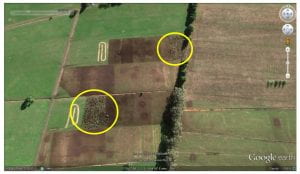Relevant Publications
Julian JP, Podolak CJP, Meitzen KM, Doyle MW, Manners RB, Hester E, Ensign S, Wilgruber N. 2016. Shaping the physical template: Biological, hydrological, and geomorphic connections in stream channels. In Jones JB, Stanley EH (editors), Streams in a Changing Environment, London, Academic Press, pp. 85-133.
Castro AJ, Vaughn CC, Julian JP, García-Llorente M, Bowman KN. 2015. Social perception and supply of ecosystem services: a watershed approach for carbon related ecosystem services. In Blanco JA (editor), Biodiversity in Ecosystems: Linking Structure and Function, Open-Access: InTech, http://www.intechopen.com/books/biodiversity-in-ecosystems-linking-structure-and-function.
Julian JP, de Beurs KM, Owsley BC, Davies-Colley RJ, Ausseil A-GE. 2017, In press. River water quality changes in New Zealand over 26 years: Response to land use intensity. Hydrology and Earth System Sciences.
Kamarinas I, Julian JP, Hughes AO, Owsley BC, de Beurs KM. 2016. Nonlinear changes in land cover and sediment runoff in a New Zealand catchment dominated by plantation forestry and livestock grazing. Water 8(10), 436; doi:10.3390/w8100436.
Lavy BL, Julian JP, Jawarneh RN. 2016. The impact of past and future urban expansion on soil resources in central Arkansas (USA), 1994-2030. Papers in Applied Geography 2(1): 25-39.
de Beurs KM, Owsley BC, Julian JP. 2016. Disturbance analyses of forests and grasslands with MODIS and Landsat in New Zealand. International Journal of Applied Earth Observation and Geoinformation 45: 42-54.
Tran TV, de Beurs KM, Julian JP. 2016. Monitoring forest disturbances in southeast Oklahoma using Landsat and MODIS images. International Journal of Applied Earth Observation and Geoinformation 44: 42-52.
Julian JP, Wilgruber N, de Beurs KM, Mayer PM, Jawarneh R. 2015. Long-term impacts of land cover changes on stream channel loss. Science of the Total Environment 537: 399-410.
Jawarneh RN, Julian JP, Lookingbill TR. 2015. Physiographic influences on historical and future urban growth: Case study of central Arkansas (USA), 1857-2030. Landscape and Urban Planning 143: 76-89.
Martin-Mikle CJ, de Beurs KM, Julian JP, Mayer PM. 2015. Identifying priority sites for low impact development (LID) in a mixed-use watershed. Landscape and Urban Planning 140: 29-41.
Tran TV, Julian JP, de Beurs KM. 2014. Land cover heterogeneity effects on sub-pixel and per-pixel classifications. International Journal of Geo-Information 3(2): 540-553.
Julian JP, Gardner RH. 2014. Land cover effects on runoff patterns in eastern Piedmont (USA) watersheds. Hydrological Processes 28: 1525-1538.
Julian JP, Davies-Colley RJ, Gallegos CL, Tran TV. 2013. Optical water quality of inland waters: A landscape perspective. Annals of the Association of American Geographers 103: 309-318.
Jawarneh RN, Julian JP. 2012. Development of an accurate fine-resolution land cover timeline: Little Rock, Arkansas, USA (1857 – 2006). Applied Geography 35: 104-113.
Julian JP, Thomas RE, Moursi S, Hoagland BW, Tarhule A. 2012. Historical variability and feedbacks among land cover, stream power, and channel geometry along the lower Canadian River floodplain in Oklahoma. Earth Surface Processes and Landforms 37: 449-458, doi:10.1002/esp.2272.
Julian JP, Seegert SZ, Powers SM, Stanley EH, Doyle MW. 2011. Light as a first-order control on ecosystem structure in a temperate stream. Ecohydrology 4: 422-432, doi: 10.1002/eco.144.
Julian JP, Stanley EH, Doyle MW. 2008. Basin-scale consequences of agricultural land use on benthic light availability and primary production along a sixth-order temperate river. Ecosystems 11: 1091-1105.
Julian JP, Torres R. 2006. Hydraulic erosion of cohesive riverbanks. Geomorphology 76: 193-206.

